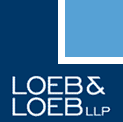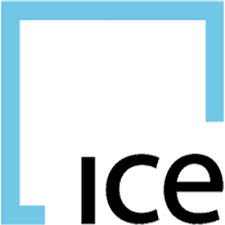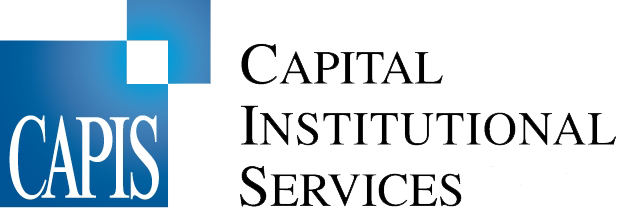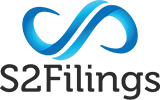99% of what is important in U.S. business must be filed at the U.S. Securities and Exchange Commission (SEC).
But much of what is filed is not very important.
SEC Info℠ helps you quickly find what is important to you.
Our Information is not just about Securities, it is business intelligence about public companies and their owners.
We are not the SEC and neither affiliated with nor endorsed by the SEC.
Our Users say we are much better...
SEC Info℠ is not simply about finding SEC Filings,
which you can do at the SEC and other websites, albeit with more difficulty.
It is instead about extracting the useful Securities Information in SEC Filings and organizing it to make it easily accessible to you.
We do this in many ways, to save you time and effort.
SEC Filings by themselves are static stand-alone documents.
SEC Info’s artificial-intelligence parsing engine understands the content and context of SEC Filings, and it does two things:
It parses the content of Filings and, understanding context, updates our “entity” database, the most sophisticated SEC Filings database in the world.
It then “webifies” the Filings’ Documents, by adding billions of links, so that,
if you are reading a Document and encounter a reference to another Filing or to something in our database, you can click to get more information.
The database itself is what our site, essentially Our App, is built upon.
Most of the pages in Our App relate to information from our database, allowing views of data aggregated from many Filings.
Only a few pages handle the displaying of Filings’ Documents that have been “webified” by us.
Other sites allow you to see static Filings, but have no way to find information in them or get to related Documents.
Our goal is to save you time finding the information you want, and getting you quickly to useful information you may not otherwise know exists.
Having the database also allows us to offer Other Services to address your individual information needs.
We can provide personalized pages tailored to your unique situation, with customized queries and presentation formats.
We can also provide proprietary data sets, which you can import into your own database.
Please see Our Demos.
Our App is free for 99% of our 600,000+ users. We support it by asking our most frequent users to pay for it. Here are Some of Our Clients↓ who have recently payed to use Our App and the Other Services we offer... |
| • | Mailing Lists and many other specialized Data Sets, including proprietary data and services related to all SEC Filing Agents & Filing Software |  |
| • | Specialized E-Mail & Text notifications, such as for when Filings contain things you’re really interested in, e.g., certain words (phrases or names) or Insiders’ “Short-Swing Profit” (§16) Transactions [ see Demos↓ ] |
| • | Data Sets tailored to your unique needs, delivered with customized criteria and presentation formats [ see Demos↓ ] |
| • | Proprietary Data for your research projects, e.g., the time any Filing was first viewable at the SEC’s website |
| • | Financial Data (from Filings with XBRL) re-organized into tables for your relational database and SQL queries |
| • | Application Program Interfaces (APIs), so you can directly access our extensive database |
| If interested in a custom solution for your information needs, please contact us via our Help page. |
| • | This Usage Agreement is between Fran Finnegan & Company LLC (the “Company”),
owner of this website and its underlying technology and data (“SEC Info”), and you, the user of SEC Info.
You agree that all personal user information provided by you is true, i.e.,
the individual user name, e-mail address and phone number are real and yours.
Your personal user information will not be sold to other parties by the Company.
|
| • | You will not use SEC Info, nor will you copy features of SEC Info, in any way
to develop (or manage) or while developing (or managing) a competing service,
either as an employee or contractor of such competitor or any of their parents or subsidiaries.
|
| • | You will not save or copy any pages of SEC Info, in their original or an altered form, for the purpose of
redistributing them to another party or republishing them at a website or in an information service.
All content of SEC Info is owned and copyrighted, and all rights to it are reserved, by the Company.
|
| • | You may access SEC Info only with a Web browser.
You will not access SEC Info in an automated way, such as by using computer software scripts
or any other programmatic means, for the purpose of obtaining copies of our content (which we sell).
The only exception to this provision is for publicly-accessible search engines.
|
| • | If you write or publish anything based upon information obtained from SEC Info,
you will credit SEC Info, in a way that is customary or appropriate in your profession and as you would
any other information source, as “SEC Info” and/or “www.secinfo.com” and,
if doing so electronically, with it being a Web link to SEC Info.
|
| • | The Company may ask you to subscribe to SEC Info at a price rate to be determined and agreed upon at that time.
To help the Company keep such potential fees low by having a large number of users,
you agree that, while you use SEC Info, you will tell your friends and associates about it.
The Company reserves the right to determine to whom it will provide access to SEC Info, either for free or for charge.
|
| • | You agree that you understand that SEC Info is not the SEC and neither affiliated with nor endorsed by the SEC,
and that SEC Info is shorthand for Securities Information
and not Securities and Exchange Commission Information.
The SEC is only one of many providers of information to the Company.
|
| • | Neither the Company nor any providers of information to the Company shall have any liability
for the accuracy of the information contained in SEC Info, or for delays or omissions therein.
None of the foregoing parties shall be liable to any third-party for claims or losses of any nature,
including but not limited to, lost profits, punitive or consequential damages.
|
| • | This Agreement, which may be amended from time to time,
is either with you (as an individual) or jointly with you and the organization you’re working for (if employed),
and you may not assign your rights or obligations to anyone.
This Agreement, all intellectual property issues, and your rights and obligations shall be governed by the laws of
the USA and the State of California governing contracts wholly entered into and wholly performed within California, regardless of your location.
You agree to resolve any legal disputes of any kind via legal proceedings physically located within the San Francisco Bay Area in the State of California, USA.
|
| • | You are bound by the terms and conditions of this Agreement until you have a written agreement with the Company
that explicitly overrides a term or condition of this Agreement.
If any provision of this Agreement is invalid or unenforceable under applicable law,
the remaining provisions will continue in full force and effect.
|
| |
| The SEC is... | | • |
The U.S. Securities and Exchange Commission —
See the SEC’s site
|
| | |
| | • |
The federal agency responsible for enforcing
U.S. Securities Laws
|
| | |
| EDGAR® is... | | • |
The SEC’s Electronic Data Gathering, Analysis and Retrieval system, which went “beta” in July 1992 and fully operational on 5/6/96 |
| | |
| | • |
The document-management system used by the SEC to receive, store and disseminate the SEC Filings mandated by U.S. Securities Laws — Most SEC Filings are filed electronically at the
EDGAR Filing Websites |
| | |
| | • |
A registered trademark of the SEC |
| | |
| SEC Info℠ is... | | • |
Shorthand for Securities Information,
and not Securities and Exchange Commission Information
since we are not the SEC and neither affiliated with nor endorsed by the SEC and do not offer info about the SEC —
The Securities Information on our website comes from many Wall Street sources,
and with respect to SEC website content only includes data related to publicly-available SEC Filings and SEC Registrants |
| | |
| | • |
A sophisticated service for viewing all SEC Filings,
with billions of links added to Filings whose data has been organized
to minimize the time and effort needed to find the Securities Info you’re looking for —
Our Info supports business intelligence for sophisticated business professionals |
| | |
| | • |
The 3rd-oldest website with SEC Filings, in “beta” on 9/5/97
and fully operational in March 1999 —
Designed and run by Fran Finnegan, a former Wall Street investment banker
who worked in New York City for 12 years at E.F. Hutton and First Boston |
|

 |
| | |
| | • |
Located in the largest Internet data center in San Francisco , California, U.S.A.,
at the north end of Silicon Valley, the software center of the universe |
| | |
| | • |
| A service mark of Fran Finnegan & Company LLC (FFC) —
FFC is a sister company of Finnegan O’Malley & Company Inc. (FOC), a software-development company that has written software for
numerous clients, including American Airlines, Charles Schwab and Microsoft —
FOC software is in every version of Windows from Windows 95 through Windows 11 and Windows Server 2022 |
|

 |
|
| | |
| | • |
Not the SEC and neither affiliated with nor endorsed by the SEC,
but was “linked” — Fran Finnegan’s
Corporate Finance department head on Wall Street was Chairman of the SEC when EDGAR® was created |






























